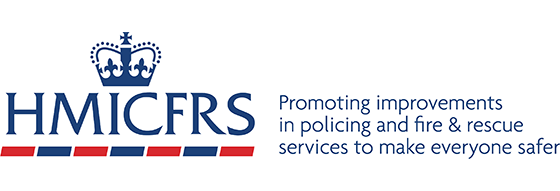Response to Independent Review of the Criminal Courts
On 31 January, I submitted HM Inspectorate of Probation’s response to the Independent Review of the Criminal Courts. I will be discussing these points further with its Chair, Sir Brian Leveson, when we meet later this month.
“As HM Chief Inspector of Probation, I provide independent oversight of the work of the probation service and youth justice services and therefore much of my response to this review focuses on those areas. However, having spent more than three decades working in the criminal justice system, including a number of years working in HM Courts Service, and working on the implementation of Sir Robin Auld’s 2021 Review of the Criminal Courts from 2001-03, I thought it would be helpful to share my thoughts on the wider questions raised by your review.
There can be no question that the current level of the trial backlog in the Crown Court and its consequential impact on trial delays is corrosive to public confidence in the justice system. These delays are unfair to both victims who are waiting an unacceptable amount of time to see justice, and to defendants who are waiting for an excessive time, sometimes on remand, to establish their guilt or innocence. Looking at it through the lens of probation the current delays also mean that the system is unable to effectively intervene on the underlying causes of offending (with defendants on bail waiting for excessive periods for trial and when found guilty, sentence). Realistically some of those awaiting trial whilst on bail will inevitably reoffend whilst awaiting trial.
In his 2001 report on the criminal justice system Sir Robin Auld made a case for the creation of a new intermediate tier. Whilst that proposal did not meet favour at that time, my view is that the current delays are so deleterious that radical steps are now needed to provide a fairer, more effective system. However change cannot be solely about structure, increased efforts need to be made to make the criminal courts more efficient and effective.
Provided there are safeguards, I would support a move to establish an intermediate tier consisting of two magistrates and a judge. Many of the concerns expressed about jury trials fail to take account of the reality of the way in which cases are currently dealt with in the system. There are a whole range of serious summary only offences (including cases of domestic abuse) which cannot be tried in the Crown Court, and a range of either way offences which are dealt with fairly and effectively in the magistrates’ court. For cases involving children, the Youth Court is already the main venue for all but the gravest offences. Nobody has ever seriously suggested that such cases have resulted in injustice. Whilst Crown Court trial is essential for the most serious cases (e.g. murder, other serious violence offences and serious sexual offences); there are a wide range of medium range offences which are already triable either way and in all but the most serious cases do not require trial by jury. If a proportion of those cases could be dealt with in a new intermediate tier, we should see speedier justice for those accused of more serious offences. In making the case for reform it would be interesting to calculate how much time would be saved per case without a jury. In my experience cases involving juries start later, finish earlier and have longer breaks.
Any new system will need to be properly resourced and will create some additional costs. However, a new tier of court would not necessarily need additional bricks and mortar. The current court estate is already underutilised, and I see no reason why existing Crown Court, combined courts and magistrates court buildings could not be utilised. It may also be possible to deploy District Judges as well as Crown Court judges to deal with the caseload.
Whatever reforms are embarked upon, concerted efforts must be made to seek to ensure that cases dealt with at that tier are dealt with efficiently, with better earlier identification of guilty pleas and key issues, to ensure that trials are effective and that sentences are swift and effective.
Based on the results of our inspection programme I am concerned that there has been an erosion in sentencer confidence in the work of probation, despite the evidence that demonstrates that community sentences can be more effective at reducing reoffending. Whilst sentences are entirely a matter for the judiciary, trusted advice from the probation service on the circumstances of an offender and sentencing choices are crucial. Since 2012 there has been a significant reduction in the number of community sentences imposed by the courts which have more than halved from 150,000 in 2012 to 71,000 in 2023 (Criminal justice system statistics: Sentence types – Criminal justice system statistics – Justice Data).
Whilst some of this change may be down to case-mix, over a similar period the use of pre-sentence reports has changed dramatically. In 2009 211,494 pre-sentence reports were prepared for the courts, including 113,508 full written PSRs. In 2022 that number had fallen to 83,240 PSRs with just 3,561 full written PSRs (a 97 per cent reduction). The Centre for Justice Innovation found that ‘because cases with PSRs are more than ten times more likely to receive a community sentence, falling numbers of PSRs is strongly linked to the decline in community sentences’ (The changing use of pre-sentence reports (PDF, 877 kB)).
If the system is to be more effective there needs to be a concerted effort to rebuild sentencer confidence in probation. There should also be better pre-sentence preparation to ensure cases are dealt with effectively and in a way that strikes at the underlying causes of offending. Whilst there are some offences and offenders who will always face the prospect of a custodial sentence, there are other offenders and offences where prison achieves nothing to tackle the underlying causes of crime. Based on what we know about those entering the justice system, they are more likely to have drug or alcohol issues, to be homeless or unemployed, have mental health and other issues.
A new intermediate tier might provide a platform to reinvigorate stronger links between sentencers and probation more generally, and to ensure that there is a full and timely analysis of the underlying reasons for offending and consideration of the sentence most likely to break that cycle. This may also help rebuild general sentencer confidence and willingness to impose community sentences, which appears to have been undermined by the turmoil the probation service has faced over the last decade. It is notable that one of the key benefits identified in the recent evaluation of intensive supervision courts is the closer relationship and understanding between probation staff, sentencers and treatment providers (Process evaluation of intensive supervision courts pilot: interim report – GOV.UK). Drawing on these lessons of problem-solving courts, it would undoubtedly be advantageous to the system, if more time was spent seeking to identify and remedy the reasons for the offending (drugs, alcohol, mental health etc).
As well as inspecting probation, I also inspect youth justice services. I should note that increasing concern is being expressed in the sector about the impact that increased court delays is having on cases involving youths. A new intermediate tier might provide a further opportunity to consider what more can be done to ensure such cases are dealt with as expeditiously as possible. Whilst there has been a massive reduction in the number of children in custody, over a third of the children now in custody are on remand awaiting trial. As highlighted in the Lammy report these delays particularly impact on black boys who are less likely to plead guilty and more likely to be remanded in custody.”



